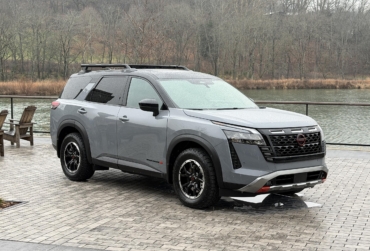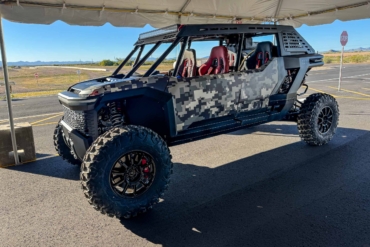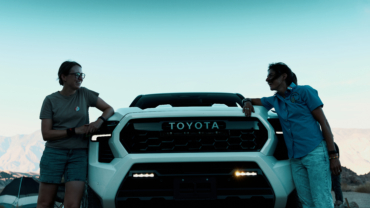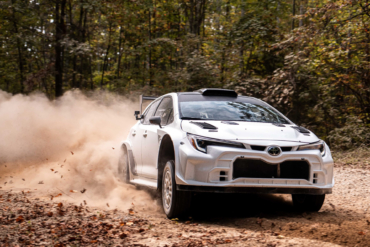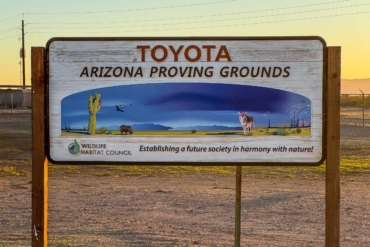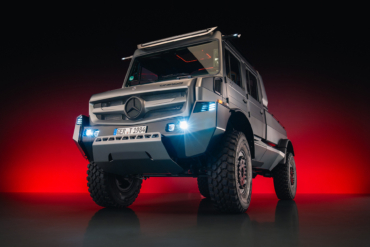The nation’s top-selling midsize truck has some serious shortcomings. But I fixed them — and so can you.
Before I dive into why I hated my Tacoma (and why it is still parked in my driveway), I have to go back to the year 2000 — I had just turned 16. Driver’s license in hand, my dad threw me the keys to his white 1995 4Runner Limited with big meaty tires and perfectly polished chrome.
I was being trusted with what could only be described as the perfect midlife-crisis-mobile.
I slid the key into the door lock (because the ‘90s), hopped up into the brown leather interior — with “wood” trimmed accents — turned over the engine, and listened to the soft purr of the 3VZ engine. Pulling out of the driveway for the first time, I felt like the king of the road.
From that moment on, I hoped that someday this car could be mine (until my brother wrapped it around a pole in a parking lot, but that’s a different story).
Even though that 4Runner is long gone, I still lust over similar cars.
Late last year, I finally bought my dream Tacoma — only to find it had some serious shortcomings. So, I put my head down and started researching what it would take to make it the truck I knew it could be. It wasn’t easy, per se — but it’s also not impossible.
If you’re looking at a Tacoma for adventure and performance, like I was, read on to see how I made it a comfortable daily driver and trail-worthy rig.
Why Buy a Tacoma?
I come from a family of Toyota lovers. They are safe, reliable, and seem to last forever (the cars). And I’ve owned my fair share over the years, from a well-built FJ Cruiser, to a 4Runner, and even a Camry. In my experience, they’re always ready to take you where you want to go.
Fast forward to December of 2020. I finally convinced my wife that after 8 years of treating small SUVs like trucks, it was time to buy the real thing. I knew exactly what I wanted: a Toyota Tacoma.

The used market was, and still is, nothing short of shocking. Tacomas sell as-is for just a few grand below a new model MSRP — with 50,000 miles on the odometer.
We decided it made the most sense to look at new 2021 models that just hit the lot a few months prior. They were selling fast and for good reason; they are the bestselling mid-size truck 16 years running, and they have the highest resale value of any car at over 70% after 5 years.
After a few weeks of searching and test driving, we found the one: a Super White Toyota Tacoma DoubleCab TRD Off-Road 4×4 Short Bed (MSRP $43,275). The ride home in the new truck was filled with excitement as memories of that ‘95 4Runner came flooding back. I missed driving a truck and I was excited for all the adventures to come.
But, this isn’t the story of the Tacoma I loved …
How to Upgrade a Toyota Tacoma
Sadly, my honeymoon phase quickly waned as the reality of how this truck really drove set in. And trust me, I get it. It’s a truck, not a luxury vehicle. But dammit, I hated every second of driving this truck.
It felt both stiff and soft at the same time. The steering is vague; it felt like it was floating down the highway in the worst way. And don’t get me started on the choked-out engine!
I tossed some sandbags in the back in hopes of settling down the rubbery suspension feel. But with only 400 pounds in the back (of the 1,200-pound payload!), I hit the bump stops driving over a speedbump at under 5 mph.
That’s right — a brand new truck, with one-third of the payload in the back, slammed the bump stops on a speed bump at a brisk walking pace. How was I ever going to load it down with bikes and gear, and drive off the pavement for a few days?
I had serious buyer’s remorse. But I wasn’t ready to give up on my Taco. I knew that despite all its shortcomings, I could make this the truck I wanted. So I got to work.
Suspension
The biggest issue off the lot was the suspension. So I went down the list of aftermarket options from Bilstein’s, Old Man Emu, and even pricey options like Fox and Icon Vehicle Dynamics.
But I knew the latter options were out of my budget and I’d likely never do them justice. On top of that, they required more maintenance to keep them performing at their best. I wanted something that delivered improved on-road handling with reliable off-road performance — and could hold up to the wear and tear of daily driving without a ton of maintenance.
Ironman 4×4
Enter Ironman 4×4. I had never heard of the brand before I started researching options for this truck, but with 50+ years of history in the Australian Outback, I decided to reach out about its Foam Cell Pro shocks.
After talking to a few folks on the team, we decided to go with the Foam Cell Pro Stage 2 Suspension with Upper Control Arms to keep the alignment in check. On paper, it was the perfect balance of on-road comfort and off-road performance.

Proven over many years and harsh miles of military use, the Foam Cell Pro shock is filled with premium-grade FUCHS oil and the brand’s foam cell sleeve technology. The foam cell sleeve is impregnated with millions of tiny bubbles of nitrogen, maximizing oil and thermal carrying capacity, which nearly eliminates high internal pressures found on regular nitro gas-shock absorbers.
The result is a super consistent, minimal maintenance setup that should last for years without degrading. And when the time comes, they are fully rebuildable.
The Foam Cell Pro shocks are like little clouds under the truck. They handle bumpy roads and flexy obstacles without hesitation and have made this truck how it should have been from the factory. The new springs, shocks, and leaf packs added stiffness in all the right places and nearly eliminated the rubbery feel.
Everything feels more solid driving on or off pavement. But when you put the skinny pedal down on a rough patch of dirt, it soaks up everything and gives you great control of the truck.
Let’s be honest — most of these trucks are daily drivers. So while off-road performance is highly desirable, we still want a well-mannered, comfortable riding truck on pavement. The on-road handling is noticeably improved with significantly less body-roll when cornering.

In addition to improved performance, the Stage 2 kit also adds a couple of inches of lift to clear larger tires and give a little extra ground clearance when getting off the pavement.
I’ll admit, I’m not a huge fan of the bright green springs on the front coilovers, but I could always paint them later down the road.
The Stage 2 Kit comes with everything you need, including all brackets and shims to keep driveline vibrations and other issues in check. All in, the kit costs $2,795, but keep an eye out for Ironman 4×4’s seasonal sales!
Wheels and Tires
Toyota is way behind the game when it comes to tires specced on off-road trim. Even on the TRDPro model, the stock Goodyear Wranglers are below average for this price point.
Most competitors with off-road-worthy trim spec all-terrain tires that can perform off-road. And while most people won’t care or really use their Taco truly off-road, some of us will need to upgrade them.
Method Trail Series
Since I was planning on doing a moderate lift, I also wanted a little more wheel offset to get a slightly wider stance. Method recently released the Trail Series featuring what the brand calls Bead Grip Technology. This is essentially a street-legal bead lock.
The Bead Grip engages both inner and outer tire beads for a stronger hold under extreme side load and at lower air pressures, which provides more traction off-road. I went with the 701 style at 16×8 and zero offset.
General Grabber ATX
For tires, I’ve run General on most of my cars for the last 8 years. The updated Grabber ATX looked to be the perfect balance of all-terrain performance with road-friendly manners. And the price is one of the less expensive options on the market.
The new Grabber ATX gets an upgraded sidewall, borrowed from the brand’s mud terrain tires. This adds a little sidewall bite for better traction in most conditions.
With the added fender clearance, I stepped up a few sizes to 285/75/16. They rub the tiniest bit when off-roading or on tighter pavement turns, but nothing a little trimming can’t fix!

The increased tire size has netted a 2-3 mpg reduction in gas mileage. But there is a noticeable improvement in handling and performance across the board. These tires even feel better on pavement. They are slightly louder at highway speeds, but I can still have a normal conversation in the cab.
I bought the wheel and tire package, including a full-size spare and TPMS, mounted and ready to install for $2,500 from Tire Rack. You could skip the wheels and just get the five tires for around $1,000.
Overall, the upgraded wheels and tires have improved the performance and look of the truck!
Little Engine That Could (Not)
Since the third-gen Tacoma was introduced in 2016, there have been major issues with the choked-out engine and 6-speed automatic transmission. Toyota has even released a few service bulletins to address the issue.
Though it’s improved over the last 5 years, it still is a poor driving experience. Some of the main issues include hunting for gears (even on Midwest hills), poor throttle response, and an extremely poor and uneven power curve.
Orange Virus Tune
OVTune, or Orange Virus Tune, is a very highly regarded option that is undetectable by the dealership. It effectively corrects most of the issues with the engine, including shift points and power delivery.
If you’re techy and like messing around with all the fun settings, you can buy the full kit and install it yourself. But if you’d rather leave the computer science to others and just reap the rewards, there are plenty of options across the country to pay for a license and having it installed on your truck.
The tune also allows you to adjust for larger tires, higher octane gas, and upgraded battery setups. I won’t say whether I’ve had it done (for fear of voiding some warranty), but as you can see here, there are plenty of happy customers!
Companies like Sibi Built even offer their own custom tunes to further improve the driving experience, especially for built rigs.
Other Upgrades
Softopper

I bought the truck to use as a truck, but still want to be able to keep stuff out of the weather. The Softopper is a perfect blend of a topper and open bed. At under 30 pounds, the topper provides plenty of weather protection with minimal effect on hauling ability.
Plus, it can be removed in just a few seconds should you find yourself with a bigger load than expected, or when hauling bikes or other large outdoor gear. The install was straightforward, and it’s held up to a Minnesota winter.
Boreal Rack
I went with the short bed for better off-road handling and urban maneuverability thanks to the shorter wheelbase — but that also means less storage in the bed. So, I needed a little more room for storage on longer trips.
Living in the salt belt of the U.S., I knew winter conditions can be hard on most bolt-on accessories. Boreal Racks is new to the automotive industry, but it has a deep history in outdoor recreation. The rack features all-aluminum construction and well-thought-out features to reduce wear and tear in northern climates.

It was a no-brainer for me. Install was incredibly simple and the rack has performed flawlessly so far. The brand also spent a considerable amount of time with R&D to reduce wind noise — and it shows. Cabin noise is virtually nonexistent with an empty rack.
For longer trips and off-road excursions, I throw a few traction devices and a storage box with recovery gear up top for easy access if I get into a sticky situation.
Conclusion
There are a lot of Tacoma owners who happily drive a stock Taco and don’t care about any of the above issues. But if you’re hoping to get off the beaten path and push your truck a little harder than the average owner, or are just unhappy with how it drives off the lot, the above upgrades might be for you.
Even with all the upgrades, I’m still well under $50K in and ultimately have a better truck than most more expensive, off-the-lot options from other manufacturers.

With these upgrades, I’m extremely pleased with the third-gen Tacoma, and I’m genuinely excited to drive it every time I get behind the wheel. And the upgrades have improved the visual styling as well.
Now, I have the truck I’ve always wanted — and I’m not even at a mid-life crisis … I don’t think.


